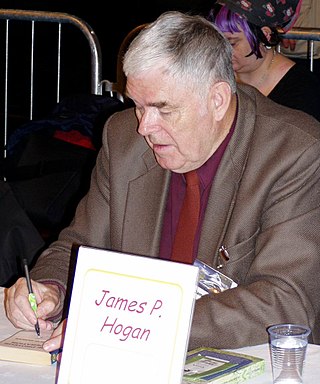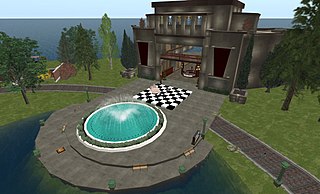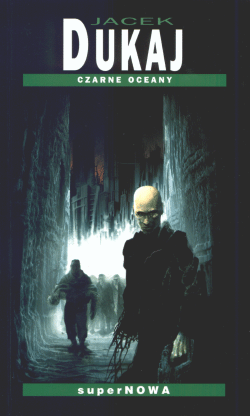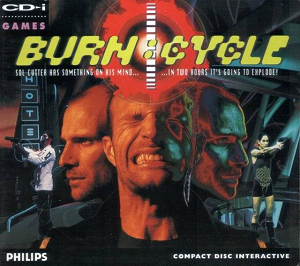
James Patrick Hogan was a British science fiction author. His major works include the Giants series of five novels published between 1977 and 2005.

Virtual reality (VR) is a simulated experience that employs 3D near-eye displays and pose tracking to give the user an immersive feel of a virtual world. Applications of virtual reality include entertainment, education and business. VR is one of the key technologies in the reality-virtuality continuum. As such, it is different from other digital visualization solutions, such as augmented virtuality and augmented reality.

VRML is a standard file format for representing 3-dimensional (3D) interactive vector graphics, designed particularly with the World Wide Web in mind. It has been superseded by X3D.

Michael Abrash is an American programmer and technical writer. He is best known for his magazine articles and books on code optimization and graphics for IBM PC compatibles and for working at id Software in the mid-1990s on the rendering technology for Quake. Since 2014, he has been the chief scientist of Oculus VR, a subsidiary of Meta Platforms.

Terry Gene Bollea, better known by his ring name Hulk Hogan, is an American retired professional wrestler. He is widely regarded as the most recognized wrestling star worldwide, the most popular wrestler of the 1980s, and as one of the greatest professional wrestlers of all time.
Hyperreality is a concept in post-structuralism that refers to the process of the evolution of notions of reality, leading to a cultural state of confusion between signs and symbols invented to stand in for reality, and direct perceptions of consensus reality. Hyperreality is seen as a condition in which, because of the compression of perceptions of reality in culture and media, what is generally regarded as real and what is understood as fiction are seamlessly blended together in experiences so that there is no longer any clear distinction between where one ends and the other begins.

Kurt Steven Angle is an American retired professional wrestler, former amateur wrestler and current podcast host. He became a gold medalist in freestyle wrestling at the 1996 Olympic Games. He is currently signed to WWE under a Legends contract. He is also known for his tenure in Total Nonstop Action Wrestling (TNA).
RTLinux is a hard realtime real-time operating system (RTOS) microkernel that runs the entire Linux operating system as a fully preemptive process. The hard real-time property makes it possible to control robots, data acquisition systems, manufacturing plants, and other time-sensitive instruments and machines from RTLinux applications. The design was patented. Despite the similar name, it is not related to the Real-Time Linux project of the Linux Foundation.

Kevin Scott Nash is an American retired professional wrestler, podcaster and actor, currently signed to WWE under a legends contract. He is also known for his tenures with World Championship Wrestling (WCW) and Total Nonstop Action Wrestling (TNA).

A virtual world is a computer-simulated environment which may be populated by many users who can create a personal avatar, and simultaneously and independently explore the virtual world, participate in its activities and communicate with others. These avatars can be textual, graphical representations, or live video avatars with auditory and touch sensations. Virtual worlds are closely related to mirror worlds.
LPMud, abbreviated LP, is a family of multi-user dungeon (MUD) server software. Its first instance, the original LPMud game driver, was developed in 1989 by Lars Pensjö. LPMud was innovative in its separation of the MUD infrastructure into a virtual machine and a development framework written in the programming language LPC.

Brooke Ellen Bollea, better known by her stage name Brooke Hogan, is an American television personality and musician. She is married to ice hockey player Steven Oleksy and is the daughter of former professional wrestler Hulk Hogan.

Super Star Wars: Return of the Jedi, also known as Super Return of the Jedi, is a 1994 action video game developed by LucasArts and Sculptured Software and published by JVC Musical Industries for the Super Nintendo Entertainment System. It is a sequel to Super Star Wars (1992) and Super Star Wars: The Empire Strikes Back (1993) and is based on the 1983 film Return of the Jedi. It was ported to the Game Boy and Game Gear by Realtime Associates, which were published by THQ in 1995. The game was re-released on the Wii Virtual Console in North America on September 7, 2009 and in PAL regions on October 16, 2009, alongside the other games in the Super Star Wars series.

A virtual museum is a digital entity that draws on the characteristics of a museum, in order to complement, enhance, or augment the museum experience through personalization, interactivity, and richness of content. Virtual museums can perform as the digital footprint of a physical museum, or can act independently, while maintaining the authoritative status as bestowed by the International Council of Museums (ICOM) in its definition of a museum. In tandem with the ICOM mission of a physical museum, the virtual museum is also committed to public access; to both the knowledge systems embedded in the collections and the systematic, and coherent organization of their display, as well as to their long-term preservation. As with a traditional museum, a virtual museum can be designed around specific objects, or can consist of online exhibitions created from primary or secondary resources. Moreover, a virtual museum can refer to the mobile or World Wide Web offerings of traditional museums ; or can be born digital content such as, 3D environments, net art, virtual reality and digital art. Often, discussed in conjunction with other cultural institutions, a museum by definition, is essentially separate from its sister institutions such as a library or an archive. Virtual museums are usually, but not exclusively delivered electronically when they are denoted as online museums, hypermuseum, digital museum, cybermuseums or web museums.

The Colonial National Invitation, titled for sponsorship reasons as the Charles Schwab Challenge since 2019, is a professional golf tournament in Texas on the PGA Tour, played annually in May in Fort Worth at Colonial Country Club, which organizes the event. It is one of five invitational tournaments on the PGA Tour; the inaugural event was held 78 years ago in 1946.

Czarne oceany is a science fiction novel by Polish writer Jacek Dukaj, published in Poland by Supernowa in 2001. The novel fits in the hard science fiction genre, describing the late-21st century Earth facing technological singularity. The novel received the prime Polish award for sci-fi literature, Janusz A. Zajdel Award, for 2001.

Burn Cycle is a 1994 point-and-click adventure video game for the CD-i that incorporates full motion video and is set in a surrealist cyberpunk world. The game follows Sol Cutter, a computer hacker and data thief, whose latest theft causes a virus named Burn Cycle to be implanted in his head. The game features a two-hour countdown timer to defuse the virus, with the player jumping back and forth between a fictional ingame virtual reality world known as the Televerse in order to destroy the Burn Cycle virus and solve the mystery of its creation.

Colin Myles Joseph MacCabe is an English academic, writer and film producer. He is currently a distinguished professor of English and film at the University of Pittsburgh.

James Francis "Shanty" Hogan was an American professional baseball player. He played in Major League Baseball as a catcher from 1925 to 1937. Hogan was listed at 6 feet 1 inch (1.85 m) and 240 pounds (110 kg) — an exceptionally large player, especially for his era. Due to this, there are many anecdotes relating to Hogan and food. This included several conflicts with manager John McGraw, who often attempted to persuade Hogan to lose weight. He was generally known as a good natured ballplayer and a decent hitter who had his best years with the Giants, hitting over .300 for four consecutive seasons in New York.
Cyberformance refers to live theatrical performances in which remote participants are enabled to work together in real time through the medium of the internet, employing technologies such as chat applications or purpose-built, multiuser, real-time collaborative software. Cyberformance is also known as online performance, networked performance, telematic performance, and digital theatre; there is as yet no consensus on which term should be preferred, but cyberformance has the advantage of compactness. For example, it is commonly employed by users of the UpStage platform to designate a special type of Performance art activity taking place in a cyber-artistic environment.
















